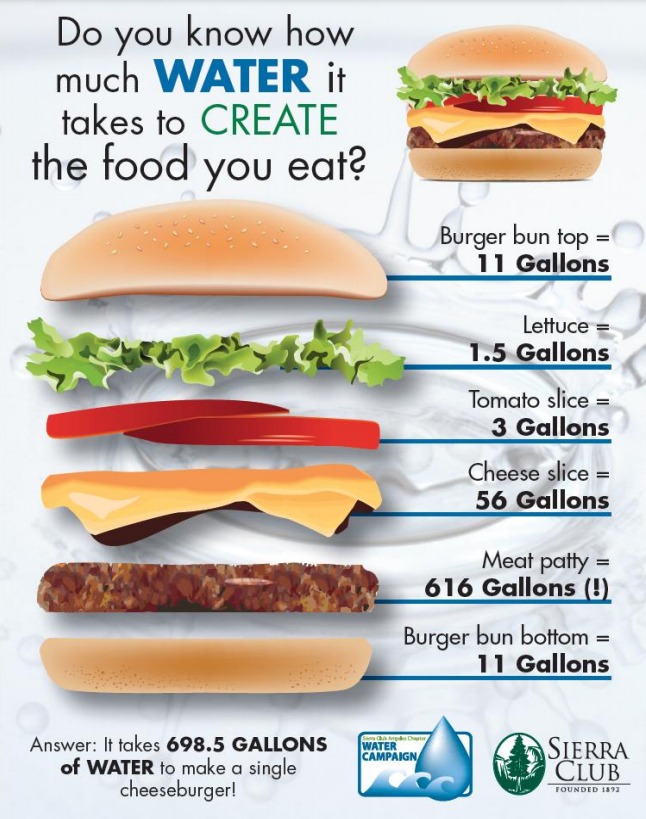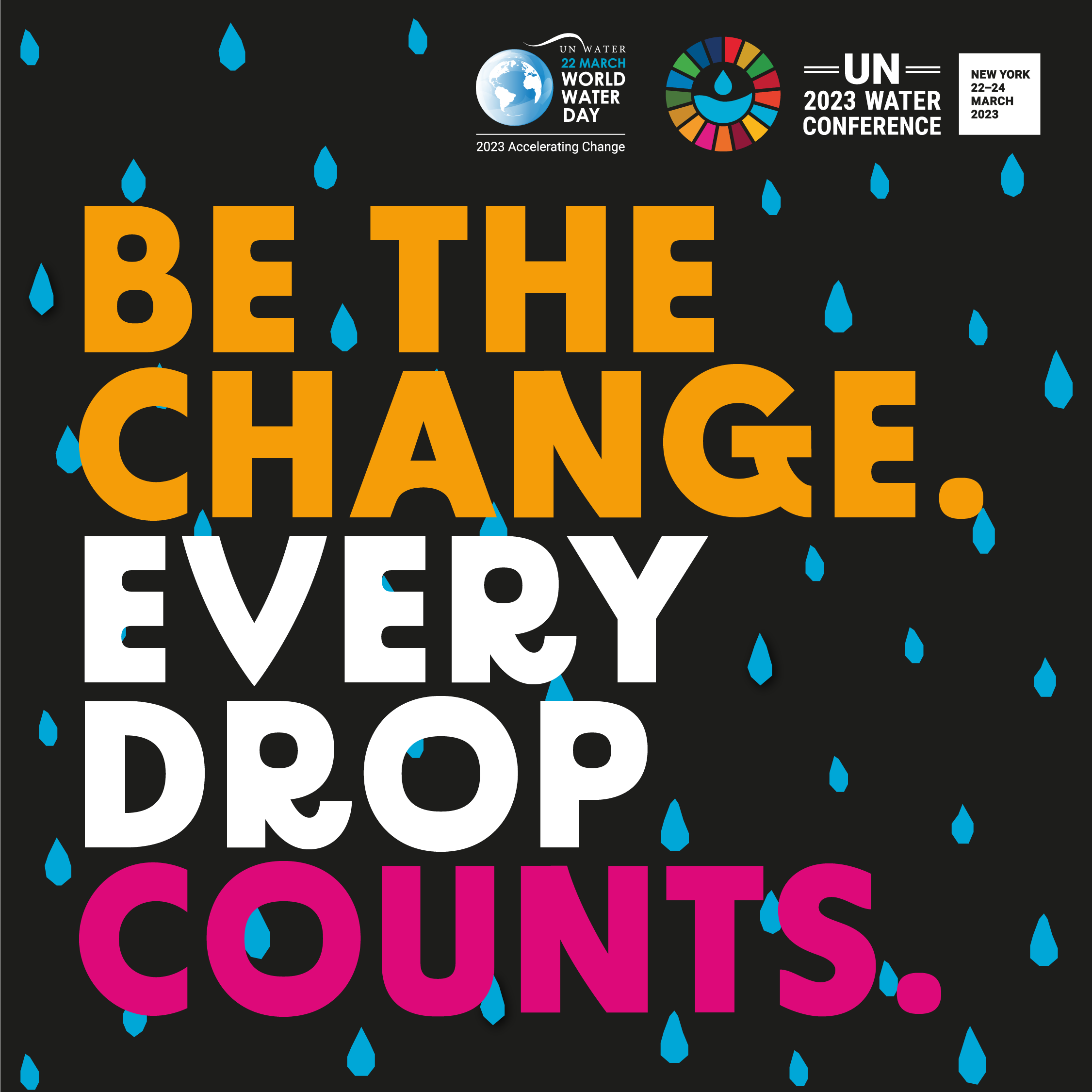by Cynthia Jackson

The United Nations’ theme for this year’s World Water Day is a familiar one that, in my opinion, applies to all aspects of our lives and one I bet that you have even heard before. It’s “Be the Change (That You Want to See)”. It is so popular that a song shares the same title. This theme invites you to look at and analyze your relationship, awareness, and utilization with water and all of the facets associated with it. March is also the month that the UN will turn their focus to Sustainable Development Goal 6 – Clean Water and Sanitation. The UN is holding a Water Conference on March 22-24, 2023 to decide on the actions and commitments needed on an international level relating to their Clean Water and Sanitation goal and the global water crisis.
As I write this, we have had a significant amount of rain and snow throughout the State. This has somewhat mitigated, but did not eliminate the impact or effects of the multi-year drought. Weather extremes are a permanent part of the climate change that we are experiencing. Conservation is still critically needed.
So, what can an individual do?? Landscaping usually accounts for the largest residential water consumption usage. Fix those leaky sprinklers! I can’t tell you while out walking how many times I’ve seen more water being put on the sidewalk or out in the street than on any of the plants. Speaking of plants, go native! They are better equipped to thrive on less water and handle our changing climate since they have evolved here.
A lot of people have turned to artificial turf as a solution. This isn’t the best option since it disintegrates, sending bits of plastic to the air and ocean, while contributing to the urban heat island effect. It is not biodegradable (nourishing to the soil), or supportive of habitat, (I remind you that pollinators and insects support your food web) and goes to the landfill at the end of its short lifespan. Maybe even consider converting that lawn (or multiple pots, if a small space) to a vegetable garden where you can grow some of your own food, an excellent use of your water plus savings in the way of money, transportation, and distribution which all add to our daily carbon footprint.
Also, consider weather based (aka smart) sprinkler controllers which moderate the amount of water based on plant type, soil, slope and weather conditions. Our storm drain systems are built to move water quickly out to the ocean, retain and absorb as much rainwater on your site as possible, which will nourish your plants and also help recharge the groundwater. Direct downspouts to planted areas in a rain garden. Put those buckets out to capture the rainwater for later use! Consider installing a greywater system, if viable for you. Absorb as much water on your property as possible to recharge your groundwater. Encourage our Water Districts and Officials to promote and facilitate stormwater and rainwater capture. What can’t be stored can recharge the groundwater and aquifers.
The largest commercial user of water is agriculture.
Producing feed for livestock takes 1 gallon per 100 pounds of body weight and double that in hot weather. Climate change is necessitating a change in current practices. We will need to rethink the type of crops grown. It is irresponsible and counterproductive to try and grow crops requiring a high level of irrigation in our increasingly arid environment. Consider eating plant-based. It takes much less water to grow produce than meat or poultry. It takes 700 gallons of water to produce a single cheeseburger! 700 gallons! That amount of water could produce substantially more plant-based food, providing a higher level of nourishment.

On the topic of food, don’t waste it – a lot of water went into growing it! Compost what you can’t eat either onsite, at the garden locations that accept food scraps to compost, or (more recently in the City of LA) in your curbside green bin. It takes 60 gallons of water to grow one avocado!
Another source of water consumption is textiles. Quite a bit of water is utilized in the production of organic cotton, for example. ‘Reduce, Recycle, Repurpose, Reconsider’ is a phrase familiar to many of you. It encourages you to give conscious thought to the acquisition and disposal of your “stuff”. Do you really need to own the newest, latest thingamajig? Can you repair or repurpose the old one? One guarantee is that clothing styles repeat and recycle. Yesterday’s fad will reappear tomorrow’s newest trend. Can you get it secondhand or in a clothing exchange? If it must be new, what are the environmental, sourcing and sustainability policies of the company that you are considering buying from? Are they consistent with yours? Just think it takes 713 gallons of water to produce one cotton t-shirt, 1800 gallons a pair of jeans!
So, I repeat, what can an individual do? This is where we need to bring our elected officials into our vision. Join the Water Committee. Get involved! Participate in all organizational meetings, to the extent possible that impact your water, your environment, your way of life and express your views. If you can’t attend in person, share your views by email, website input forms, phone calls, social media, etc. Run for elected office for your Water Board. Ask questions and give critical thought to the answers you receive from Elected &/or Government Officials. Encourage them to enact laws, policy and procedures that embrace the 3 legged stool – planet, people, profit, equally.
Nick Polizzi (www.thesacredscience.com/the-healing-power-of-water) presents a compelling discussion on the restorative, healing power of water to us. It is way past time for us to return the favor. I invite you to be the living example of The Change and The World you want to exist in.
Cynthia Jackson is a member of the Water Committee and an avid gardener.
